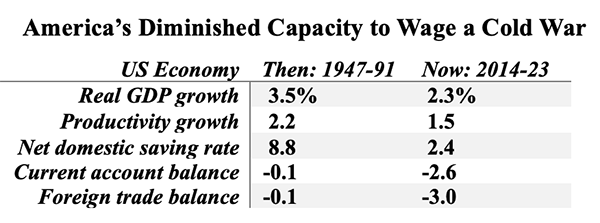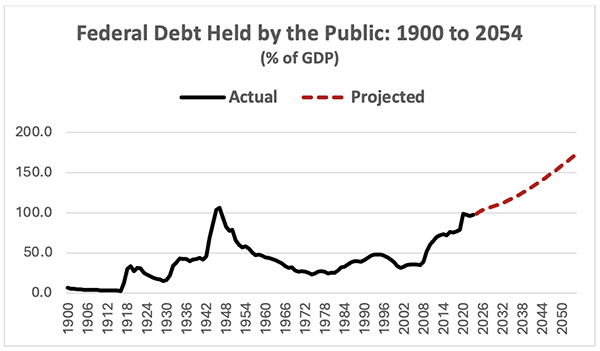There is a growing and increasingly vocal constituency in the United States that favors a kinetic war with China. Look no further than hallowed pages of Foreign Affairs, America’s preeminent platform of intellectual engagement on international policy. In the upcoming May/ June issue, Matt Pottinger and Mike Gallagher’s article, “No Substitute for Victory,” dismisses any semblance of moderation in making the case for military confrontation between the two superpowers. The subtitle of the article says it all: “America’s Competition With China Must be Won, Not Managed.”
The über-hawkish stance of the authors comes as little surprise. Pottinger and Gallagher are tough ex-Marines whose shared experience in Iraq apparently hardened them for the battle in Washington. Pottinger, a Mandarin-speaking former journalist who quickly rose up the ranks in the Trump Administration’s National Security Council, was the teacher and Gallagher was the student in their shared anti-China journey. And what a good student he turned out to be! As Chairman of the House Select Committee on China, before his abrupt recent resignation, Gallagher achieved instant fame as America’s leading China basher. True to their partnership, Pottinger was Gallagher’s lead witness in the first hearing of the Select Committee on February 28, 2023, which featured a three-minute video starring Chinese President Xi Jinping purportedly preparing his nation for battle with the West.
My point is not the bona fides of the hawks, but the perils of their message—a message that has ever-deepening bipartisan political resonance and broad appeal with the American public, where anti-China sentiment is at a record. Despite steadfast denials, US politicians are falling over themselves in efforts to contain China. Trump may have started the trade war, but Biden has been more than willing to escalate the confrontation, especially when it comes to technology and industrial policy, most recently featuring new tariff threats on Chinese steel and aluminum.
The Pottinger-Gallagher article (henceforth PG) adds a new dimension to the US-China conflict. Up until now, it has mainly been about tightening the screws on China through a combination of tariffs, sanctions, and bellicose threats. But there has been no clearly defined endgame to the continuum of conflict escalation. Jake Sullivan, the Biden Administration’s National Security Advisor, has come closest with his “small-yard, high-fence” construct, but even this approach stops short of describing a clear sense of what the United States is trying to achieve in its confrontation with China.
PG fills that void, by asking that question upfront: “What would winning look like?” Their answer is basically to own the new Cold War and to win it. In one sense, I am glad they framed the argument that way. Like the late Henry Kissinger, I have long been in the camp that the US and China are, indeed, already embroiled in the early stages of a second Cold War (CW 2.0)—at odds with many who grimace with contorted logic and somehow insist that is not the case. PG has no patience for splitting hairs and neither do I. This is a tough conflict that has yet to result in kinetic military action. But as the rhetoric and tough actions intensify, naming this conflict a cold war seems entirely appropriate to me.
Other than that, I find little else to endorse in this article. For starters, I reject their assessment of the damage that China has already inflicted on the United States. PG makes a biased case against China, endorsing a multiplicity of false narratives, many of which are featured in Accidental Conflict. Like most politicians, they have no understanding of the link between bilateral trade deficits and budget deficits that depress domestic saving. They endorse cutting off Chinese access to advanced technology, failing to recognize the powerful incentives this provides for Chinese indigenous innovation—think Huawei and its recently released 5G Mate 60 Pro smartphone. They buy into fear-driven allegations of nefarious Chinese behavior based on circumstantial evidence of intent—think EVs, construction cranes, cyber-hacking of infrastructure, and TikTok—all of which are woven together in the fabric of an increasingly toxic Sinophobia.
Secondly, I am completely at odds with PG’s hardline non-engagement stance in addressing America’s differences with China. For PG, a win stops nothing short of total capitulation by China. Their concept of victory is framed in economic terms, in geopolitical terms, and in military terms. Engagement and dialogue have no place in their recipe for confrontation. PG believes, as does the anti-China hawkish Washington consensus, that these are the same tactics that led naïve US politicians into the quagmire with Beijing. By contrast, I am firmly in the pro-engagement camp; my US-China secretariat proposal stresses that we need a different approach, a new architecture of engagement.
Lastly, I disagree with PG’s take on the lessons from the first Cold War that may be applicable in setting an agenda for combat with China in CW 2.0. They miss the critical point that the US won CW 1.0 because of economics, not an arms race. This underscores a key point that I stressed in Chapter 6 of Accidental Conflict (“Winning Cold Wars”)—that the American body politic is operating under the false presumption that what worked in the first cold war will work again this time. My argument—that China is a much stronger economic adversary than the former USSR and that the US economy is weaker today than back then—still holds. While Chinese growth prospects are now problematic, China is nowhere close to the Soviet implosion that occurred at the end of CW 1.0. And as an update of Table 1 from my book indicates below, over the past decade, the fundamentals of the US economy have taken a decided turn for the worse compared with those in CW 1.0.

Source: Accidental Conflict (Table 1, updated by author)
This latter point is certainly at odds with widespread perceptions of America’s newfound economic vitality, underscored by an unexpected soft landing after the inflation and interest rate scares of 2022-23. Notwithstanding this surprising recent resilience, my point stressed in the comparison above is that the US economy’s underlying performance over the past decade falls well short of that which occurred during CW 1.0 when America’s post-World War II vigor was at its peak. To the extent that trends over the past ten years are indicative of those to come in the period ahead, a stark disparity in US economic performance between the two cold wars is likely to persist.
I would add one other thing to the economic contrast between two cold wars. America’s debt trajectory is off the charts relative to that prevailing during CW 1.0. According to the Congressional Budget Office, Federal debt held by the US public was 97% of GDP in 2023, more than double the 42% CW 1.0 average from 1947 to 1991 (see chart below). The PG China victory campaign of “rearm, reduce, and recruit” contains several additional measures that would add further to an already ominous baseline debt trajectory—costly proposals to defend Taiwan, control the South China Sea, jumpstart domestic innovation, and expand overall defense spending from 3% of GDP to 4% or 5%. Reminiscent of the voodoo economics of the 1980s, PG offers no insight on how this massive defense build-up might be funded by saving-short America.

Defense hawks like Pottinger and Gallagher are always eager to fight the next war. In this instance, they are leading the charge against a China that they believe is the existential threat of our times. Never mind that their case is riddled with false narratives, framed by a distorted assessment of Cold War history, and barren of economic analysis. They are determined, leading conservatives in what used to be called the Republican Party. Irrespective of the election outcome later this year, they stand for the dark side of America’s increasingly strident anti-China campaign. My advice is to read this deeply flawed article carefully—it should not be taken lightly as Washington recklessly flirts with talking itself into waging a real war with China.
You can follow me on X/Twitter @SRoach_econ

